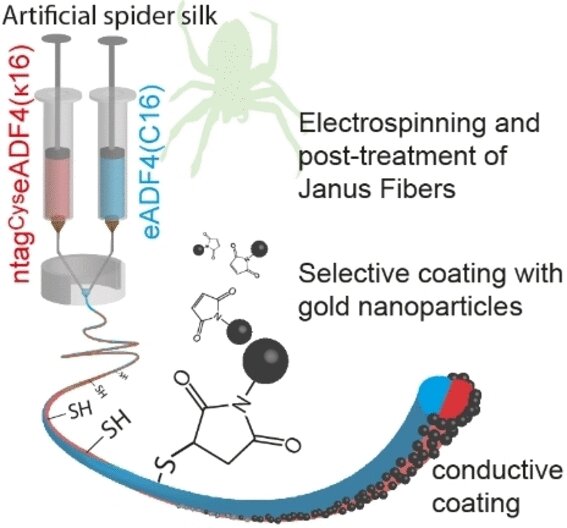Regenerative medicine: Spider silk Janus fibers could attract nerve cells and stimulate their growth
Date: 4.2.2022
Spider silk has enormous potential in regenerative medicine thanks to being a natural fiber that is tough, stable, and biodegradable. Researchers have now produced double-sided spider silk fibers, which could provide damaged nerve or muscle cells with a platform for growth.
 One side of the fibers is suitable for cell adhesion, while the other side could be used to attach factors or other substances.
One side of the fibers is suitable for cell adhesion, while the other side could be used to attach factors or other substances.
Spider silk is nontoxic, biocompatible, and attracts virtually no microbes. These properties make it an ideal candidate as a supporting medium for nerve cells to grow along. However, in spider silk's original form, this process can take a very long time and requires complicated preparative steps. With this in mind, materials scientist Thomas Scheibel from the University of Bayreuth, Germany, along with his team, optimized the natural product in more than one way simultaneously, using a biotechnological approach.
Scheibel's team produced spider silk using a genetically modified microorganism. "This gives us advantages in terms of quality," Scheibel explains, "and makes it possible to modify the proteins." The team not only modified one spider silk protein, but produced Janus spider silk fibers containing two differently optimized proteins in one material.
Janus fibers get their name from the famous Roman god thanks to their two "faces" or sides. One side of the fibers was formed from a spider silk protein in which the team substituted a single amino acid. This reversed the net charge (from negative to positive) of the protein.























